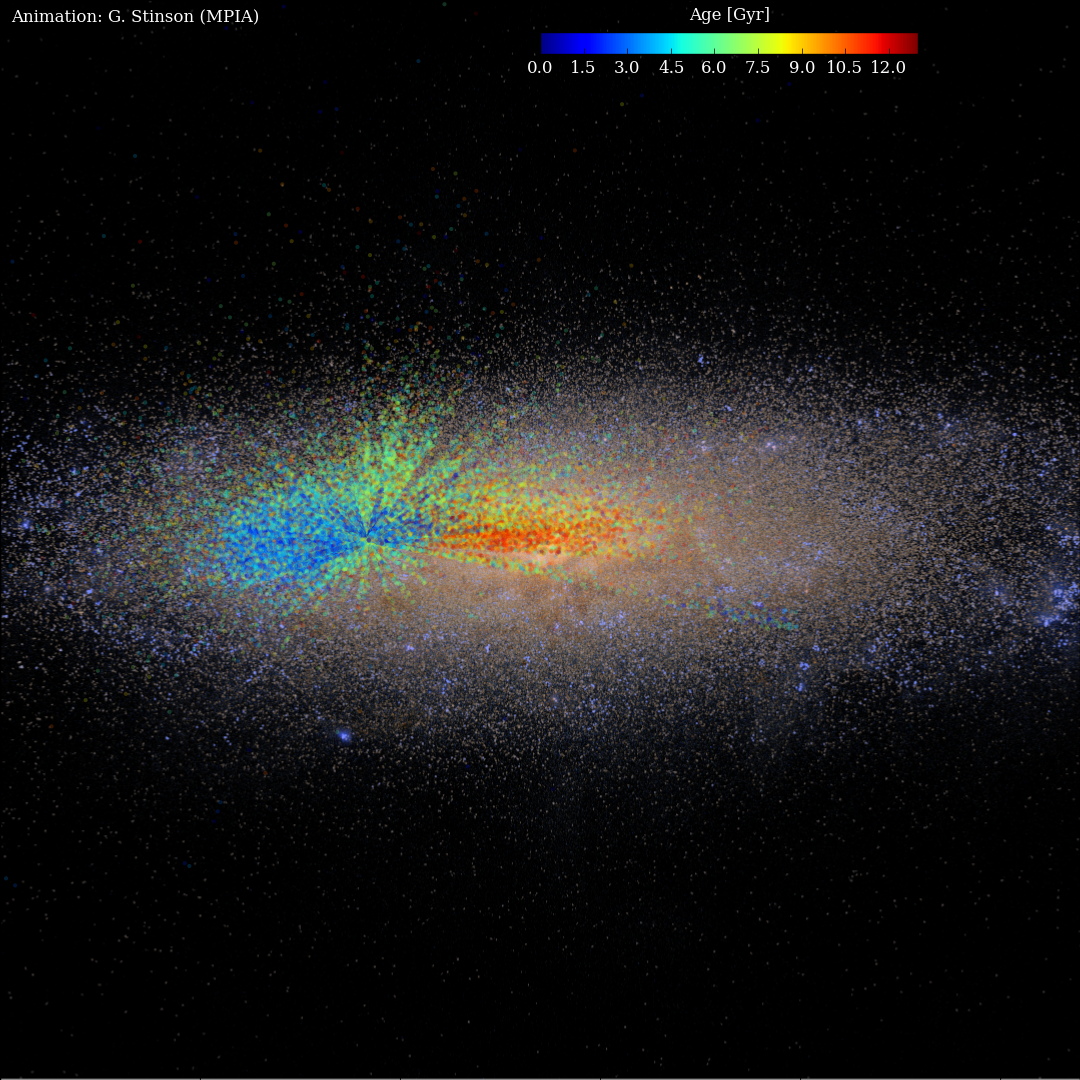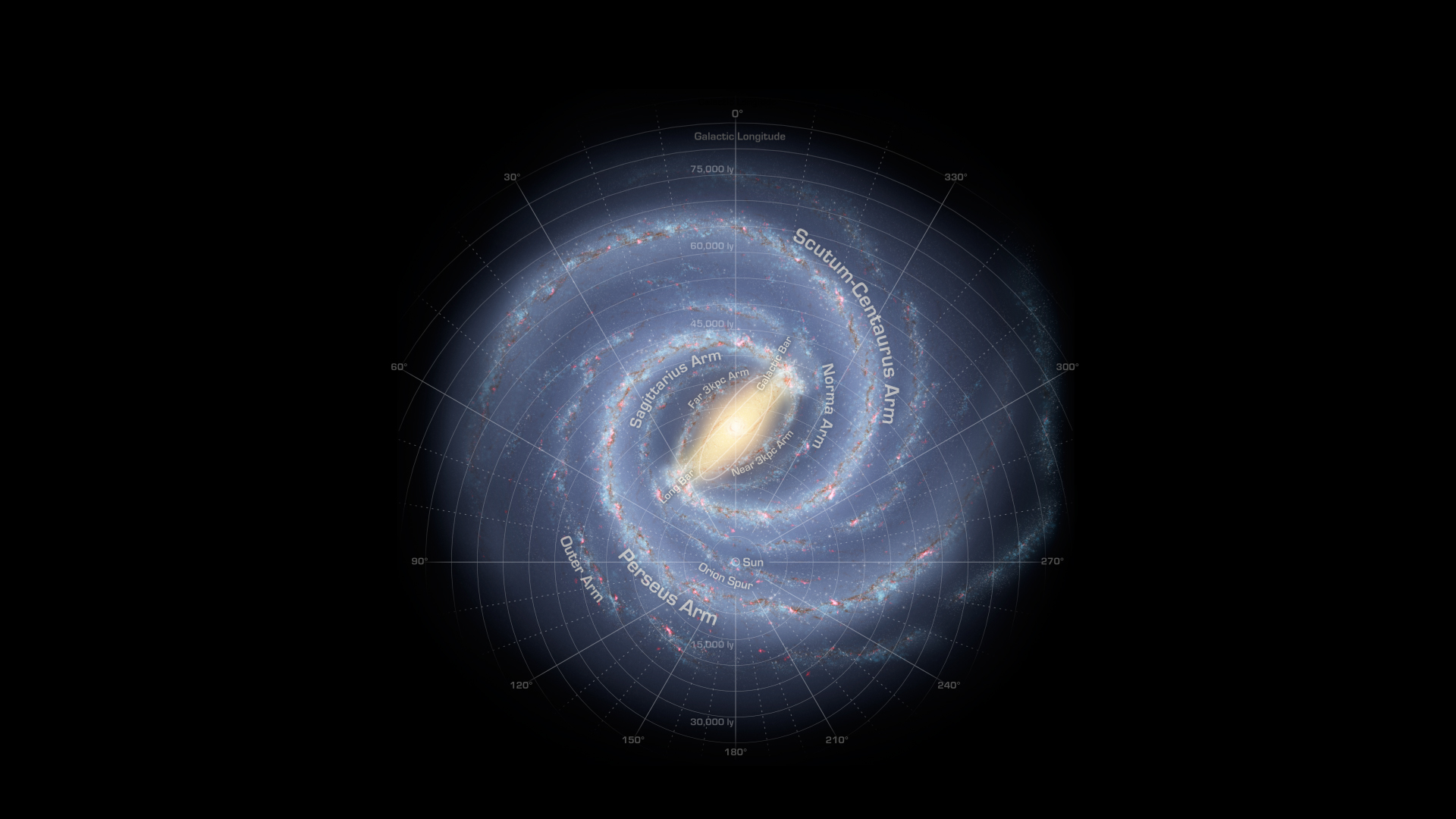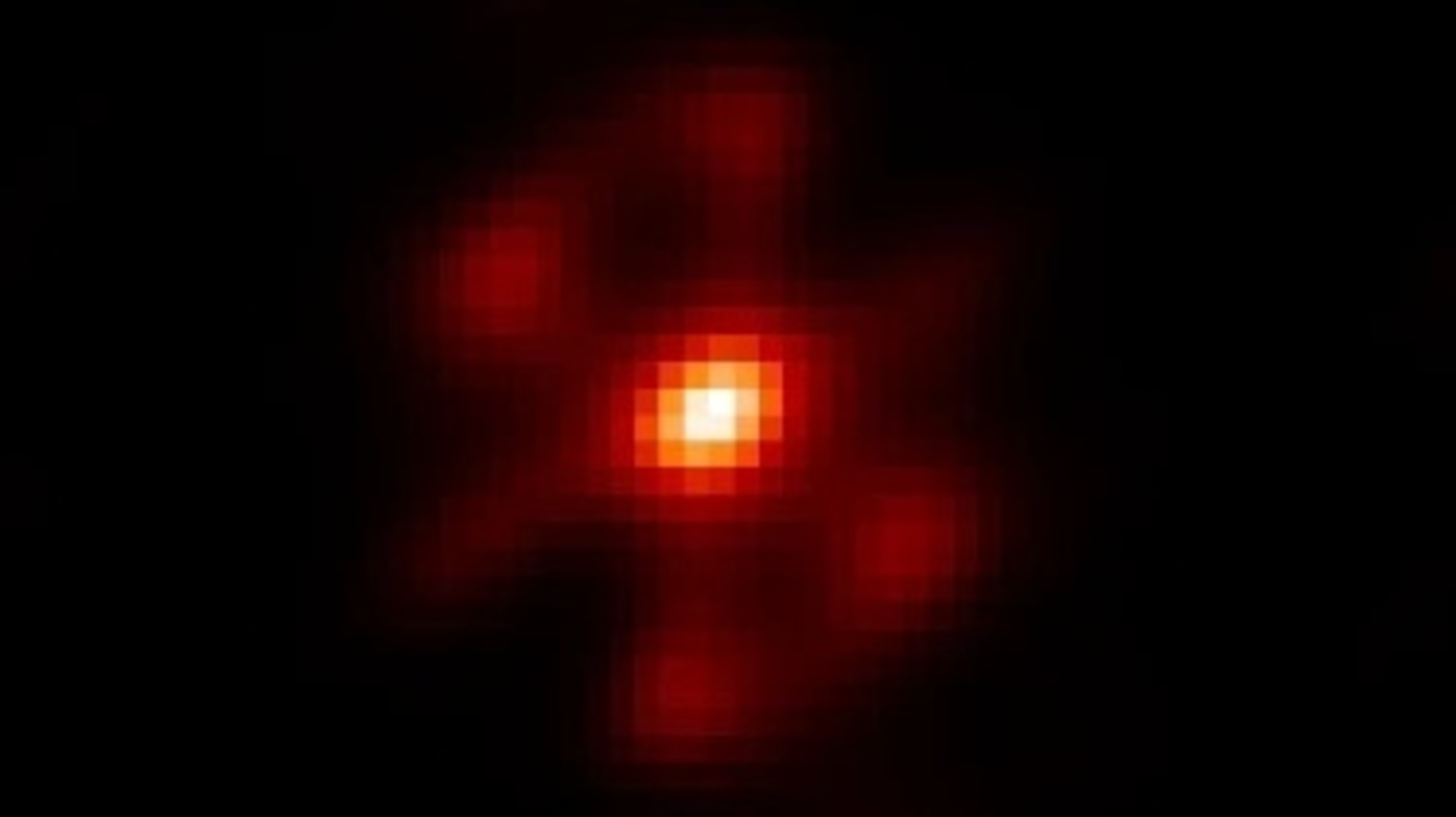Milky Way's Growth Rings Unveiled in 1st Age Map

The first complete age map of the Milky Way shows that the galaxy grew from the inside out.
To construct the map, scientists measured the composition and masses of red giant stars to determine their ages. Using a revolutionary technique, the researchers found that older Milky Way stars tend to lie near the center of the spiral galaxy, whereas subsequent generations formed around the spreading edges of the disk.
"This is key to understanding galaxy formation," Melissa Ness, a postdoctoral student at the Max Planck Institute for Astronomy in Germany, said at a press conference today (Jan. 8) at the 227th Meeting of the American Astronomical Society in Kissimmee, Florida. Ness lead a group that used the Sloan Digital Sky Survey (SDSS) to study the light, or spectra, from red giant stars to produce the first global age map of the Milky Way. [Stunning Photos of Our Milky Way Galaxy (Gallery)]
"Measuring the individual ages of stars from their spectra and combining them with chemical information offers the most powerful constraints in the galaxy," she said.
Up and out
The familiar spiral arms of the Milky Way lie in a flattened disk of dust and stars. Sorting the stars in this disk by age can help scientists to better understand how the galaxy as a whole evolved. To do that, Ness and her team studied red giant stars, bright stars for which there is a known relationship between age and mass.
That relationship depends on the life course of some stars. While some stars end their lives in violent supernova explosions, others don't have enough mass to produce such fireworks. Instead, in the penultimate stage of their lifetimes, stars like the sun swell up and become red giants, which have large radii but low mass.
Using the SDSS' Apache Point Observatory Galaxy Evolution Experiment (APOGEE), the team targeted 70,000 red giants to determine their ages and locations. But determining the mass of such a star, and thus its age, has been a long-standing challenge for astronomers. To solve the mystery, the team turned to NASA's Kepler space telescope. Although most famous for the more than 1,000 exoplanets it has discovered, Kepler has also revealed a wealth of information about stars since the observatory's March 2009 launch.
Breaking space news, the latest updates on rocket launches, skywatching events and more!
In an independent study, Marie Martig of the Swinburne University of Technology in Melbourne, Australia, looked at 2,000 stars whose masses and ages had been previously determined by Kepler. By comparing those values to the measurements of the stars' carbon and nitrogen obtained by APOGEE, she was able to calculate the relationship among red giants' mass, age and carbon and nitrogen abundances. Ness and her team, which included Martig, then used that relationship to determine the mass of the 70,000 red giant stars APOGEE had studied in the disk of the Milky Way.
"This is somewhat revolutionary, because ages have previously been considered very hard to get," Ness said.
With this age map, the scientists were able to chart how the Milky Way has grown throughout its lifetime. They found that the more-ancient, 13-billion-year-old stars were the first to form early in the lifetime of the universe. As the young galaxy collected gas and dust in a growing disk around its edges, the material became the site of the next generation of star formation.
"Our galaxy grew, and it grew up by growing out," Ness said.
Follow Nola Taylor Redd on Twitter @NolaTRedd or Google+. Follow us @Spacedotcom, Facebook or Google+. Originally published on Space.com.

Nola Taylor Tillman is a contributing writer for Space.com. She loves all things space and astronomy-related, and always wants to learn more. She has a Bachelor's degree in English and Astrophysics from Agnes Scott College and served as an intern at Sky & Telescope magazine. She loves to speak to groups on astronomy-related subjects. She lives with her husband in Atlanta, Georgia. Follow her on Bluesky at @astrowriter.social.bluesky

